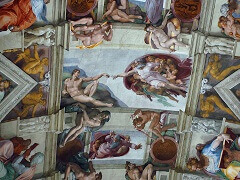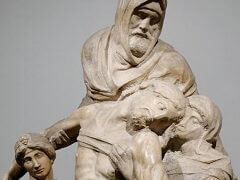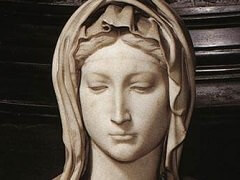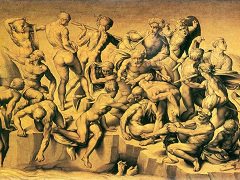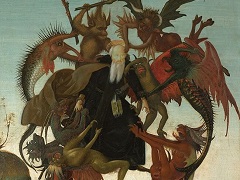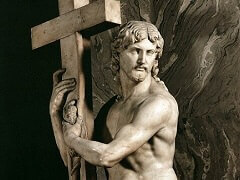The Rebellious Slave, by Michelangelo
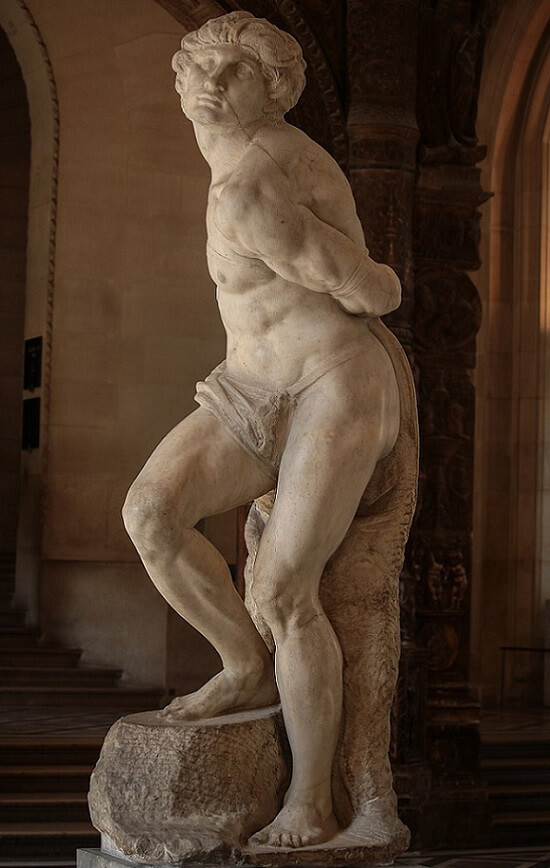
The Rebellious Slave owes its sobriquet to the forced bodily posture that, restricted by the figures arms tied behind his back, twists with a dynamic spiralling movement projecting his left shoulder forwards and tilting his head upwards, as if he yearned freedom. It must be observed that this pose, which is obviously typical of the antique representations of captives and the vanquished, had been used, however, in numerous variations in the Ignudi of the Sistine Chapel Ceiling, who were not defeated, but instead triumphant in their youthful beauty.
Leaning up against a rocky spur, which also works as a base for his right foot, with the same effect that had previously been experimented with in the Florentine Saint Matthew, this slave with a muscular body structure was almost certainly meant to occupy a corner position of the monument, as the right shoulder is nearly nonexistent and that side of the statue is flat. Like his companion, some of the parts are at an advanced stage of completion: see the complex landscape of muscles in the back and chest, inspired by the celebrated antique belvedere Torso. In comparison the treatment of the face, and even more so of the hair, is more superficial. Traces of some kind of hat or band might be an indication of the allegorical identity of the figure: an artificer wearing a band to hold his hair still. Also of a coarse texture is the surface of the cloth that conceals his genitalia, and the rocky support is rustic.


